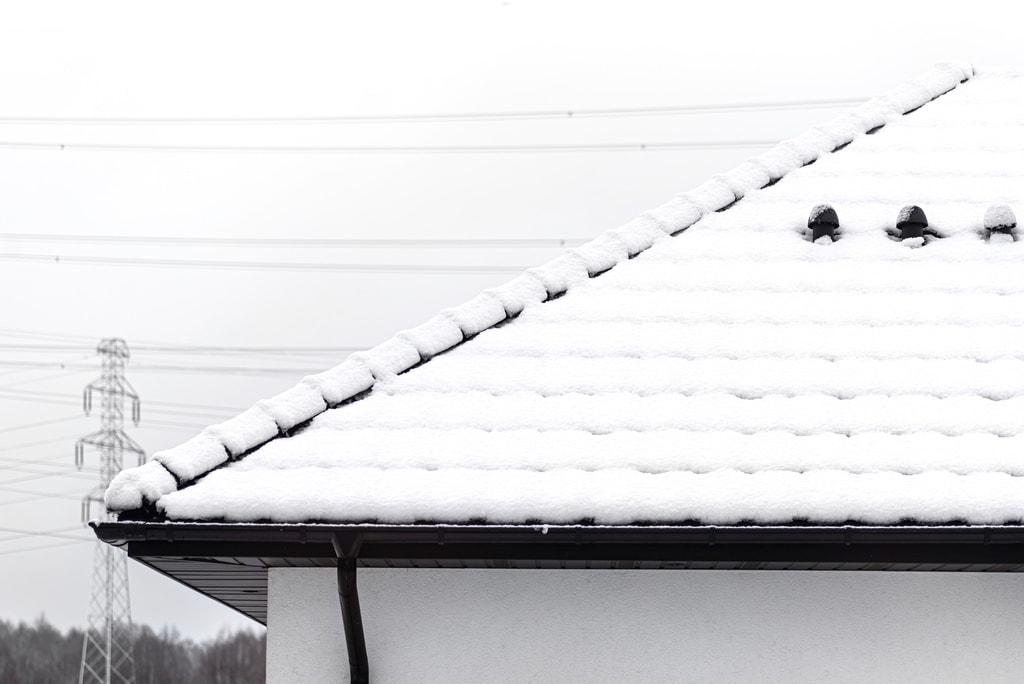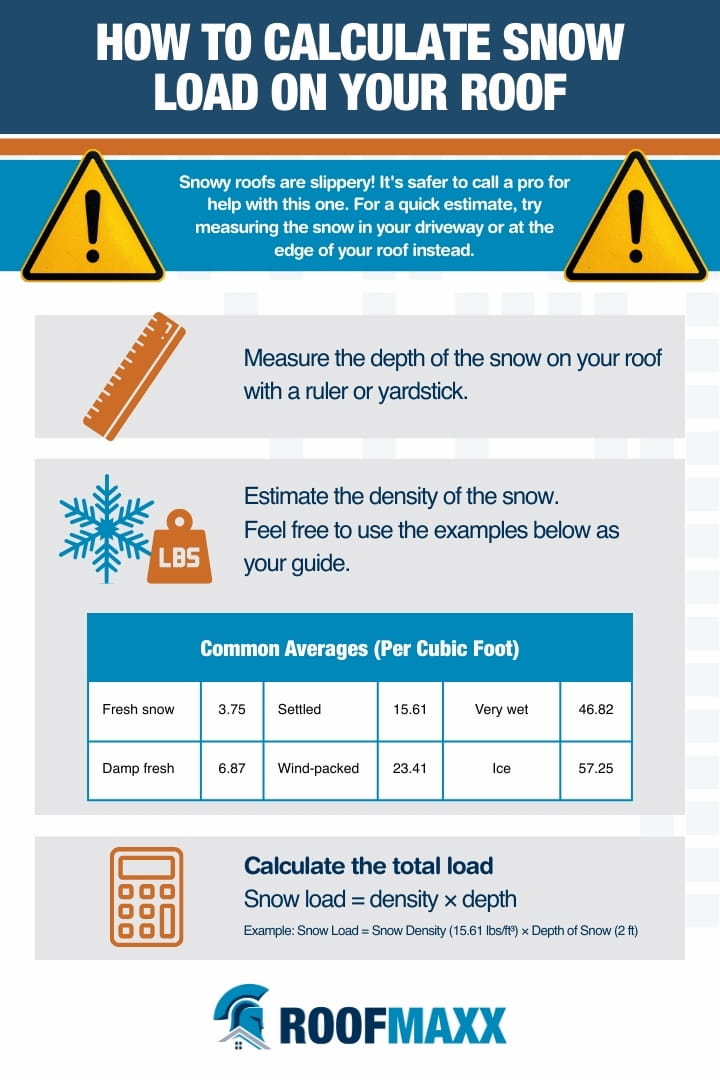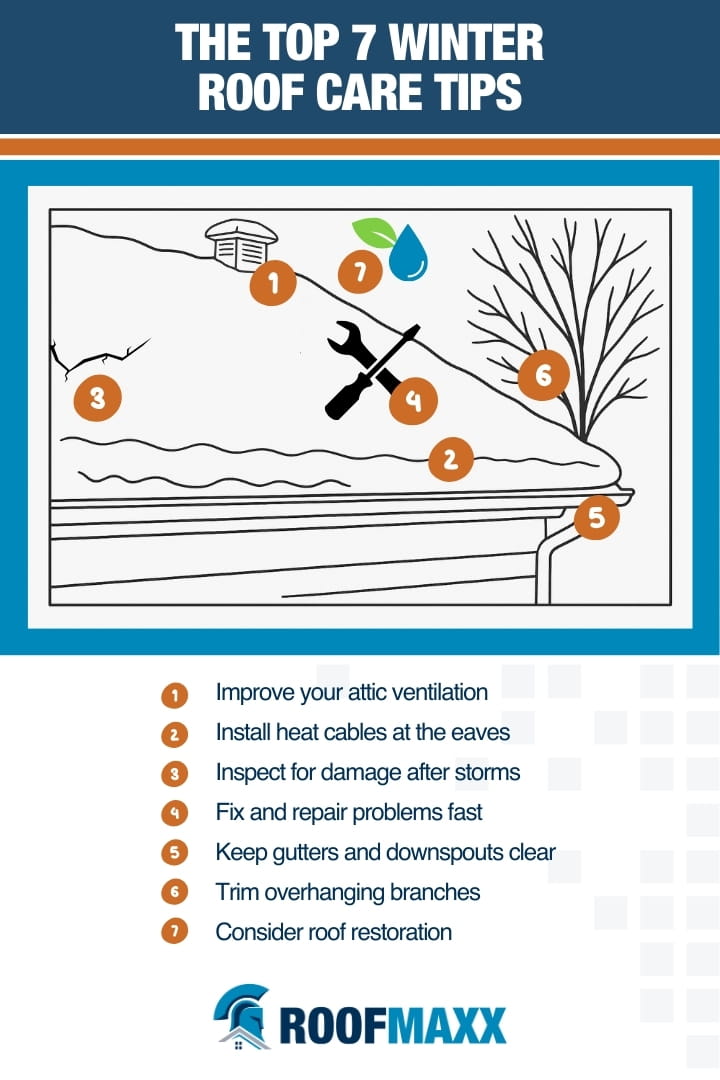Snow load capacity refers to how much weight a roof can safely support during winter storms. Capacity depends on snow depth and density, so heavy, wet snow increases strain faster than dry powder. Proper ventilation, insulation, and safe snow-removal practices help limit buildup. Routine maintenance also prevents small issues from worsening under added weight. Shingle rejuvenation treatments can improve shingle flexibility and durability after repeated freeze-thaw cycles.
| Feature | Details |
| Time to Read |
|
| What You’ll Learn |
|
| Next Steps |
|
As winter approaches, it’s important to prepare your home for cold weather, and that includes understanding how much snow your roof can handle. Roofs are designed to support specific loads, and too much snow can lead to damage or total collapse.
We’re here to help with this guide that shows you how to estimate the snow load for your roof and provides tips for keeping it in better condition as the years go by and the seasons change. Learn how to calculate the weight of snow, how roof restoration can help, and how to prevent damage in this guide.

The petrochemical oils in the core of each asphalt shingle can dry out over time. Eventually, they can become so dry and brittle that they crack, break, or shear off. Unfortunately, winter weather is a factor, and freeze-thaw cycles are becoming more common in many areas of the United States.
The good news? Roof Maxx can help!
Our all-natural roof restoration solution is ideal for:
A single Roof Maxx treatment helps you get up to five more years of life out of your existing roof, which means you’re saving money on roof placement long-term. Schedule another application every five years to get up to 15 years instead! Find out how the treatment works here.

On average, most roofs can support around 20 pounds of snow per square foot.
The only catch is that this figure will vary slightly depending on a few different factors, like:
In areas with heavy snowfall or ice storms, it’s common for roofs to be installed with extra structural support or more durable materials that can take the extra weight. But the opposite is also true: homes in milder climates might struggle more or accumulate damage faster.
Knowing your roof’s snow load is one way to prevent costly damage before it happens

To figure out the snow load on your roof, you need to consider both the depth and the density of the snow after it falls. Try this method after an “average” yearly snowfall or after a particularly bad storm.
If you don’t feel comfortable getting up on the roof (or close to it), you can also try a slightly different method. Push the snow back a few inches from the roof edge with a broom or rake, then measure the exposed depth from the side. It isn’t quite as accurate, but it will still work.
Snow varies widely in weight depending on whether it’s fresh and fluffy or wet and compact. See the chart below for a quick breakdown of the standard densities for different snow types. It’s measured in pounds per cubic foot to keep it simple.
| Type of Snow | Snow Density (lbs/ft³) |
| Fresh snow | 3.75 |
| Damp fresh snow | 6.87 |
| Settled snow | 15.61 |
| Wind-packed snow | 23.41 |
| Very wet snow | 46.82 |
| Ice | 57.25 |
To estimate the snow load on a flat roof, use this online calculator or the formula below:
Snow Load = Snow Density (lbs/ft³) × Depth of Snow (ft)
Keep in mind that flat roofs are at higher risk for snow load issues since the snow doesn’t slide off easily.
If you have a pitched roof, you’ll also want to account for the angle of the slope. More complex calculations are required for sloped roofs, so we typically don’t recommend doing this by yourself. A roofer can help you with this, but it’s best to have them measure before the snow falls (and safer, too).
The steeper your roof, the better it will shed snow naturally. This reduces the risk of too much snow building up during the winter.

Preventing snow buildup can save you a lot of trouble during the winter. This is more complicated than most homeowners realize, because so many factors can influence how fast it piles up.
Our top recommendations for homeowners are to:
Ice dams tend to happen when snow melts, refreezes, and blocks water from draining off the roof. If this is a consistent problem for you, it’s probably worth having a roofer come in to take a look at what’s going on.
Proper roof maintenance doesn’t stop at snow removal. Regular maintenance is vital for ensuring your roof lasts as long as possible, even in harsh winter conditions.
Your maintenance plan should include:
If you have trees that hang over your roof, you should trim them back in the spring or fall, too. Branches that scrape against the roof can loosen granules and damage your shingles, but they also pour water directly on the roof during storms. They also give pests an easy way to invade your roof.

Winter weather puts a lot of stress on your roof. Every ice, snow, or rainstorm can potentially lead to cracked, broken, or lost shingles, which greatly increases your risk for leaks and other more serious problems. That’s why it makes so much sense to do whatever you can to keep it in good condition.
Don’t wait for damage to force you into an early roof replacement. Roof Maxx can give your aging asphalt shingles the support they need to withstand the colder months more like they did when they were new for up to 80% less. To find out if you qualify, get a free quote!
Most roofs can support about 40–45 inches of fresh snow or 20 inches of packed snow before reaching their limit. One inch of ice is equivalent to about one foot of snow.
If your roof is sagging, it’s crucial to remove the snow as soon as possible. Use a snow rake to clear the area safely, or call a professional if the situation looks severe.
Ice dams form when snow melts and refreezes at the edges of your roof, blocking water from draining. To prevent ice dams, make sure your roof stays cold by improving attic insulation and ventilation, and consider installing heat cables.
It’s best to avoid knocking down icicles, as this can damage your gutters, downspouts, and other roofing materials. If you have large icicles, it’s safer to have a professional handle their removal.
To remove snow from solar panels, use a soft brush to gently clear the snow. Avoid scraping or using sharp tools, which could damage the panels.
With our five-year, transferable warranty, you’ll enjoy the peace of mind that your roof and entire home are protected.